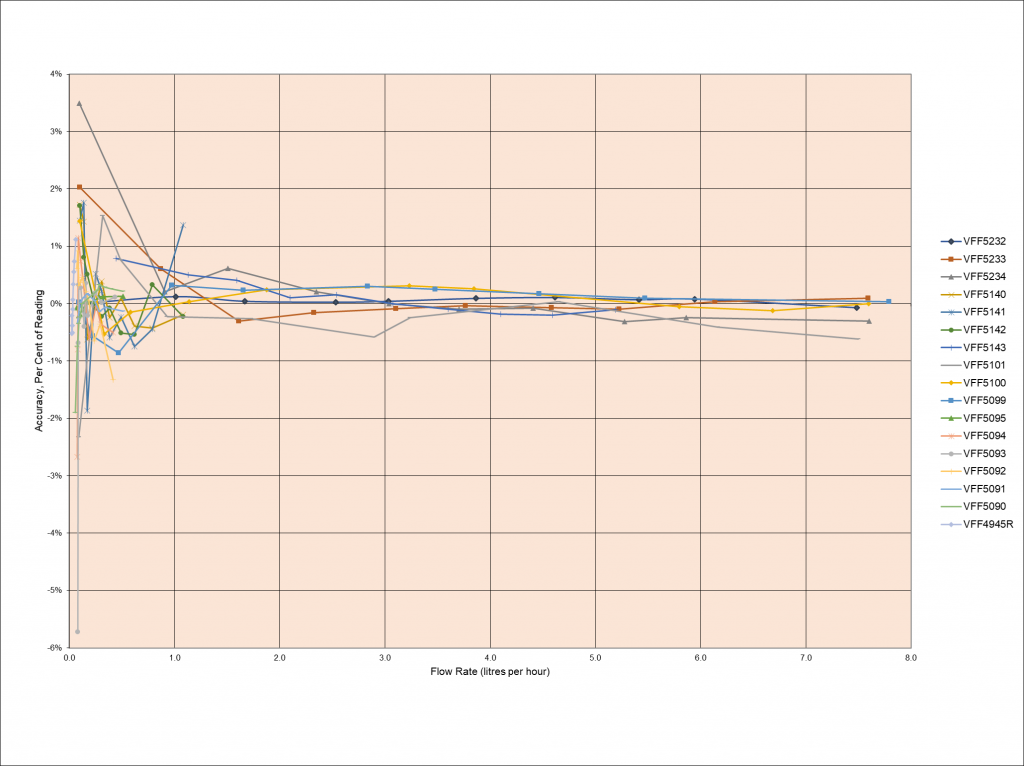It’s not an uncommon request. When the enquiry comes in, our client thinks the require range will be 1 to 10, but once installed, it’s clear it should have been 2 – 20. What do we do then?
First step
It’s unlikely the range can be extended beyond the flow meter maximum rate flow rate. Some flow meter principles can cope with excessive flow rates, probably at the expense of the pressure drop, but most can’t.
Second step
Consider the magnitude of change and the expectation of accuracy. If it’s a change from 1 – 10 to 1 – 11 with a 5% accuracy requirement when the maximum rate is 12 then that’s an easy one – check with the factory on how the range can be changed within the instrumentation but the range extension will be OK. On the other hand, if it’s a ±0.2% flow meter then it’s unlikely that any range extension will be within that value without a return to the factory for recalibration.
Here’s an example…
Our client had purchased an LF03 VFF Positive Displacement flow meter for the measurement and control of corrosion inhibitor. The viscosity was 55cP, and although the flow meter is capable of 18 litres per hour, had specified an operational range of 0.2 to 2.3 l/h which we calibrated over.
One year later, we had a request for a range change. Could they up the calibration range to 5.6 l/hr? Yes. Could we provide a statement to this, see below:
VFF flow meter extended range accuracy – 50cP viscosity
The original calibration for flow meter VFF 112 was up to 2.3 l/hr on 55cP. We have analysed the last 17 LF03s calibrate at or around 50cP and can confirm that re-ranging to 5.6 l/hr will have only a minor effect to system accuracy.

VFF Analysis
It can be seen from the aggregated performance curves above that extending the flow rate above 2.3 l/hr up to 7 l/hr produces little change in the flow meter linearity. We would suggest, in the absence of any higher flow rate information above 2.3 l/hr, the flow meter is unlikely to be outside of ±2% of the 2.3 l/hr pulses per litre up to 7 l/hr. Increased confidence and accuracy can be obtained by recalibration.